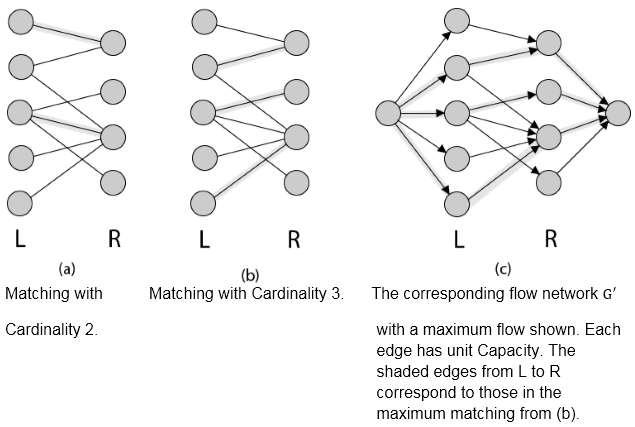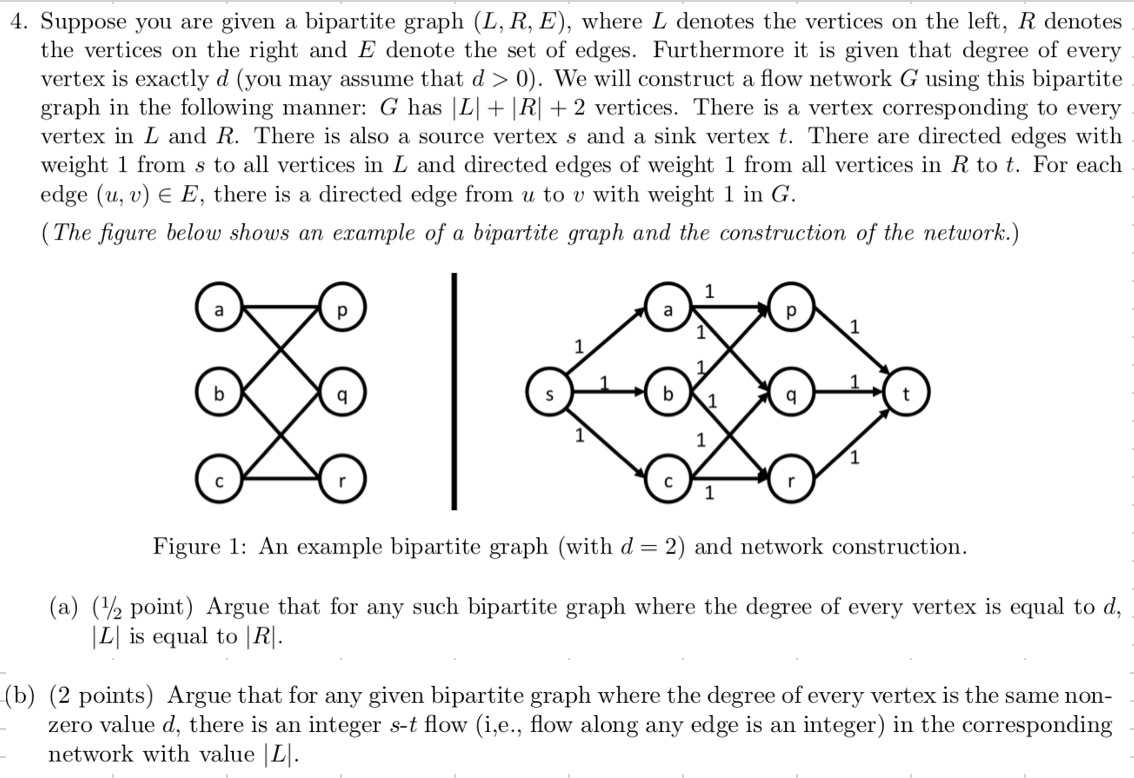
IGraph/M has specific functions that return bipartite graphs: IGBipartiteGameGNM and IGBipartiteGameGNP create random bipartite graphs with a given number of edges or a given connection probability.
#Bipartite graph r how to#
Since $k$ divides $r$, we will be able to construct an integer number of $k$-factors without having any one-factors left over. How to generate bipartite graphs The same way as any graph: specify the edge list and use Graph. That is, if our one factors are $\$$įor $1 \leq j \leq r / k$. Then we can construct each of the $k$-factors in $G$'s $k$-factorization by taking the union of $k$ distinct one-factors. decompose it into $r$ perfect matchings).

$(\Leftarrow)$ Let us do a $1$-factorization of $G$ (i.e. Hence $nk = r$, implying that $k$ divides $r$. But this union of these $k$-factors must yield $G$, which is $r$ regular.
#Bipartite graph r series#
Since every vertex of $G$ has degree $k$ in each $k$ factor, and the $k$-factors are disjoint (this is a requirement for $k$-factorization), it follows that the union of the $k$ factors yields a graph whose vertices are all of degree $nk$ (i.e. The ggbipart package includes a series of R functions aimed to plot bipartite networks within the ggplot2 environment. Let there be $n$ such $k$-factors (clearly, $n$ is a positive integer). $(\Rightarrow)$ Suppose $G$ has a $k$-factorization. hgap: Real scalar, the minimum horizontal gap between vertices in the same layer. If this argument is NULL (the default), then the ‘type’ vertex attribute is used. types: A logical vector, the vertex types. 7.An $r$-regular bipartite graph $G$ can be decomposed into $r$ disjoint perfect matchings. It should have a logical ‘type’ vertex attribute, or the types argument must be given. Assign RED color to the source vertex (putting into set U). Following is a simple algorithm to find out whether a given graph is Bipartite or not using Breadth First Search (BFS). Therefore, the algorithm returns that the graph is a bipartite graph. One approach is to check whether the graph is 2-colorable or not using backtracking algorithm m coloring problem. Many real-world systems are naturally expressed as a bipartite graph, which is a graph whose vertices are divided into two partitions. A bipartite graph with bipartition (X, Y) is said to be color-regular (CR) if all the vertices of X have the same degree and all the vertices of Y have the same.

Also, we can see two clear partitions of the vertex set: and. Now, we can see that in the graph, no adjacent vertices have the same color. The algorithm continues this process until it checks all the vertices and it’s neighbors once. As the vertex is filled with the blue color, the algorithm fills the vertex with the red color. The algorithm checks the color of the vertex. If one wants to create bipartite graph the first question is what kind of dataset available. There are weighted and unweighted graph depending on weight of edges. In this case, the vertex is already filled with color. Bipartite graph is a graph whose nodes can be devided into two disjoint sets and edges connects these two (U,V) independent sets. Again, the algorithm checks whether the vertices already filled with color or not.

The vertex has two adjacent vertices: and. Now, the algorithm checks the adjacent vertices for the. As the color of is blue, so the algorithm fills and with red: Next, the algorithm checks the color of the vertex. In our case, the vertices are not filled with color. Now the algorithm first checks if the vertices are already filled with some color. In graph, the vertex is adjacent to vertex and. We then choose any of the newly filled vertices and find the neighbors. Thus if R is the set of r highest degree vertices in G then X v2R degG(v) 2r(mrn) n: Hence the bipartite graph H with parts R V R and edge set comprising those edges of G with one endpoint in R and the other in V R has at least 2rmn3r2 edges.


 0 kommentar(er)
0 kommentar(er)
